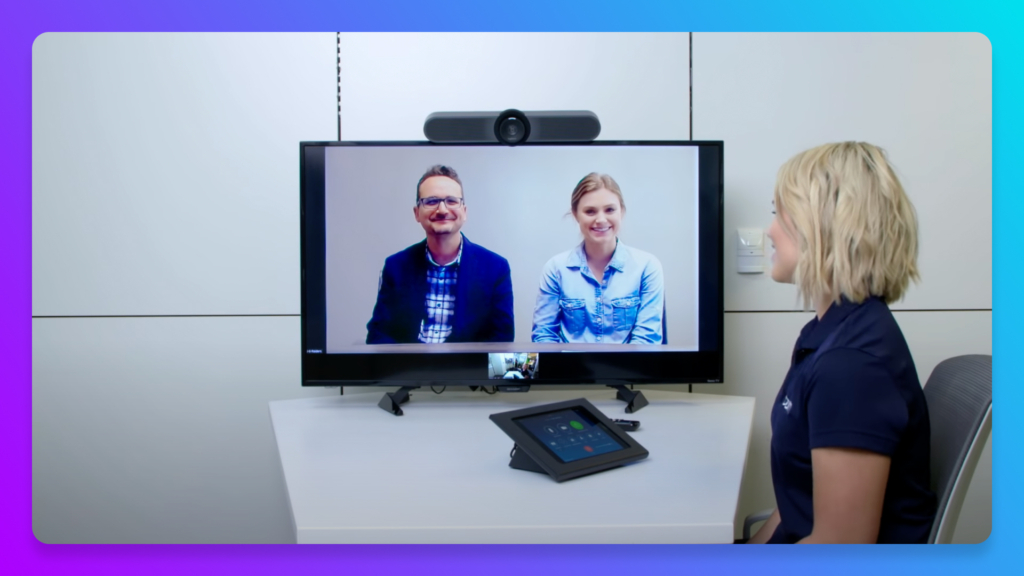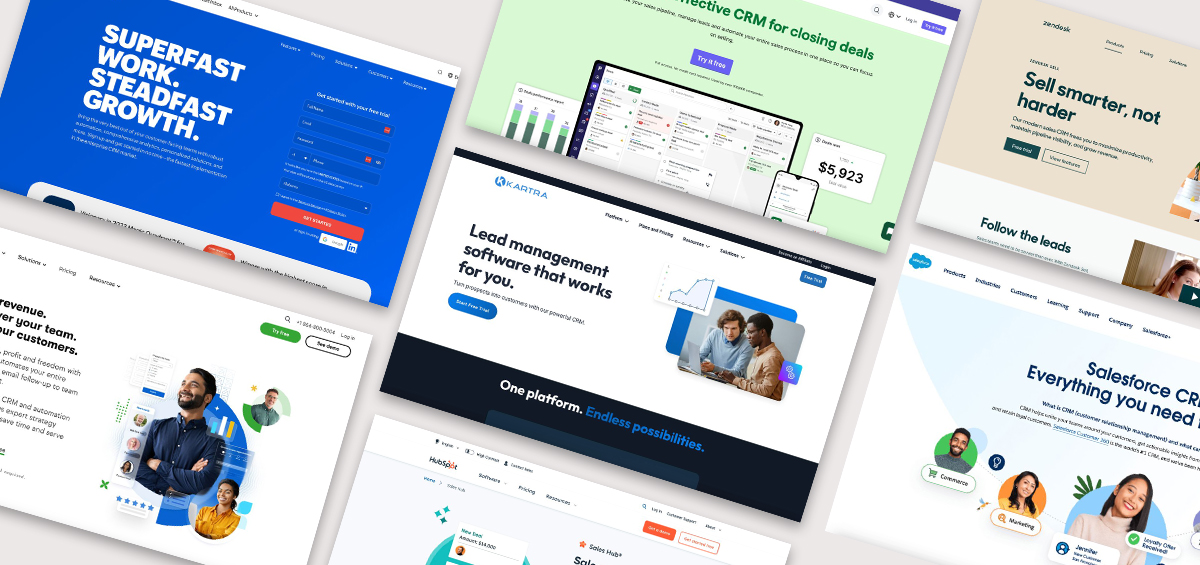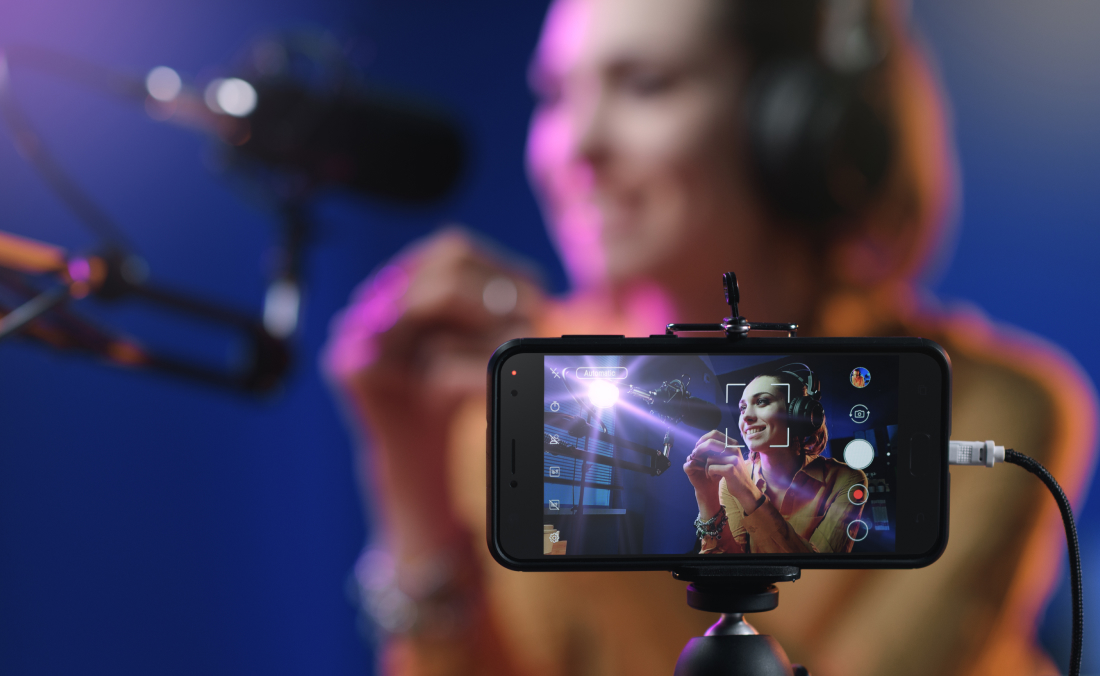Struggling to gain traction with your marketing efforts? Video marketing could be the key to accelerating your growth. According to short-form video statistics, 72% of consumers choose video content as their top choice to discover products and services. This strong inclination highlights video’s significant impact on reshaping marketing strategies, a topic we will dive into extensively.
In this article, we’ll uncover the key strategies for crafting an effective video marketing sales funnel that not only captivates, but converts. From understanding the mechanics behind it to dissecting examples of successful marketing videos and pinpointing their position within the funnel, we’ll equip you with everything you need to elevate your video marketing game.
What is a Video Marketing Funnel?
A video marketing funnel is essentially your strategy for guiding potential customers through their purchase journey using video content. It matches video types to the buyer’s journey stages:
- Awareness
- Consideration
- Decision
- Action
At the Awareness stage, the goal is to catch the attention of your target audience. Short, engaging videos work here to generate interest and traffic. You’re looking to introduce your brand and the value you provide without hard selling.
Move into the Consideration stage with educational content that nurtures interest. Here, how-to videos or product demonstrations can help your audience understand how your offerings address their needs.
As they reach the Decision stage, more in-depth content (such as testimonials and in-depth product reviews) can help sway them toward choosing your product or service. This is your opportunity to convert prospects into leads or sales.
Finally, at the Action stage, the aim is to solidify the relationship. Customer testimonials, detailed tutorials, and personalized content can encourage repeat purchases and foster loyalty.
Throughout these stages, your video content must be crafted with clear goals. They should also adhere to a defined strategy for your target audience. Videos are an excellent medium for communication – this is why they should be memorable and engaging to leave a long-lasting impression. The type of videos and their strategic placement within your marketing funnel are key to effectively nurturing leads and converting them into returning customers.

Why is Video Important in Marketing?
Being versatile in format and content, videos cater to a wide audience and accommodate various types of content such as explainer, demo, testimonial, educational, how-to videos, and product videos.
- Explainer Videos: These are short, engaging videos that explain your product or service quickly and effectively.
- Demo Videos showcase how your product works, demonstrating its features and benefits.
- Testimonial Videos: Positive reviews from satisfied customers add social proof and trustworthiness to your brand.
- Educational Videos provide valuable information or teach your audience something new, establishing your authority in the field.
- How-to Videos: Step-by-step guides help solve problems or show how to use your product, enhancing customer satisfaction.
- Product Videos: Highlighting the details and advantages of your product, these videos can influence purchasing decisions.
When you use video, you tap into the dynamic nature of visual storytelling, making it easier for your audience to remember your message. According to The Shrinking Attention Span and What it Means for Marketers, viewers retain 95% of a message when they watch it in a video, compared to 10% when reading text. Moreover, with most internet traffic being video, users are becoming accustomed to consuming content in this format.
Furthermore, video content is shareable across multiple platforms, increasing your reach and potentially your conversion rates. To put it into perspective, including video on your landing page can increase conversions by 80%.
Four Phases of a Video Marketing Funnel
Let’s take a closer look at what each phase of a video marketing funnel should involve, and the type of videos you should create for your campaign.
Top of the Funnel (TOFU): Drive Traffic & Awareness
At the top of the sales funnel, your video content should focus on capturing attention and introducing your brand to a new audience.
Your goal here is to ignite interest and encourage potential customers to learn more about what you offer by creating brand awareness and driving traffic – using engaging and informative videos to grab the attention of prospects.
These can include:
- Animated explainer videos
- Live-Action videos
- Educational Videos and How-to Videos
Animated Explainer Videos
Animated explainer videos are a popular choice for top-of-funnel (ToFu) content because they can simplify complex ideas and present them visually engagingly.
Crazy Egg is a prime example of a brand that effectively used an animated explainer video to introduce its heat map tool for the viewer to the masses.
The animation made the concept of heat mapping easy to understand, showcasing the benefits and functionality of using Crazy Egg in an informative and entertaining way. By doing this, the animated video helped people understand what Crazy Egg is all about, making them more curious about the service right from the start of the sales funnel.
Educational Videos and How-to Videos
Educational content is a powerful tool in the ToFu stage as it aims to answer questions and solve problems related to the brand’s industry. Home Depot excels in this area by providing many DIY how-to videos. These videos help customers learn how to complete projects themselves, introducing them to the tools and materials they’ll need—many of which Home Depot sells.
This approach establishes the brand as an authority in the home improvement space and subtly markets its products as solutions to the viewers’ needs. Home Depot nurtures trust and encourages further engagement down the sales funnel by educating the audience.
Live-Action Videos
Live-action videos on the ToFu stage showcase real people, real stories, or real product demonstrations. These videos can create a more personal connection with the audience by featuring product features and use cases.
Let’s take Kartra, for example. They nailed it by using live-action videos to share product features and demos – from the home page to the individual feature pages.
Like in real life, these videos help Kartra showcase its features and give visitors a sneak peek of what it does and how the software solves user problems.
Watching live-action videos can make you feel more connected to the brand, bringing in a sense of realness and relatability that’s important for getting people interested and trusting the brand from the get-go.

Middle of the Funnel (MOFU): Generate Leads
At the Middle of the Funnel (MOFU), you’re engaged with leads who are aware of their issues and are seeking solutions. This makes it the prime stage to use informative video marketing to guide them closer to purchasing.
The goal is to provide content that educates and demonstrates the value of your product or service.
Useful video types here include:
- Tutorial Videos
- Product videos
- Webinars
- Video Case Studies Customer Testimonials
- FAQs
Tutorial Videos
At the middle of the funnel (MoFu), tutorial videos come into play by providing in-depth instruction and demonstrating the practical use of a product or service. These videos are particularly useful for software companies that must educate users on navigating and utilizing their platforms effectively. An example of this could be Adobe’s extensive library of hands on tutorials for its creative software, which helps users understand and maximize the potential of their products, thereby increasing the perceived value and encouraging further engagement in the sales process.

Product Videos
Product videos are designed to showcase a product’s features, benefits, and real-world applications.
Apple, known for its sleek product videos, creates visually stunning presentations highlighting their devices’ design, features, and innovation, often prompting viewers to visualize the experience of owning and using an Apple product. These videos inform potential customers about the product in detail and help them move from consideration to the decision-making stage.
Webinars
Webinars are an effective MoFu strategy for delving deeper into subjects that interest potential customers and positioning your brand as an authority in the field. For example, Salesforce offers webinars covering various topics related to customer relationship management, providing value through educational content.
This educates potential clients and builds a relationship with them, as webinars often include a Q&A session where viewers can engage directly with the brand.
Video Case Studies and Customer Testimonials:
Video case studies and customer testimonials are powerful because they provide social proof and demonstrate the value of your product through the experiences of others.
These videos often feature real customers discussing how a product or service solved their problem, which can resonate strongly with prospects facing similar issues. This type of content can help to assuage doubts and reinforce the credibility of your brand in the eyes of potential buyers.
FAQ Videos
FAQ videos address common questions and concerns that potential customers may have. By providing answers in a video format, brands can ensure that the information is not only accessible but also engaging. FAQ videos can cover everything from product features, troubleshooting, and company policies to after-sales support.
Wistia is one brand that uses FAQs to demonstrate various concerns about their platform – with a whole suite of FAQ videos highlighting everything from uploading a video to using their platform for video creation.
This proactive approach helps to eliminate barriers to purchase, as prospects are more likely to convert when they feel informed and reassured.

Bottom of the Funnel (BOFU): Convert Leads to Sales
Your aim here is to provide that final nudge toward a purchase.
At the bottom of the video marketing funnel, your content must resonate with well-informed leads on the verge of purchasing. Your videos should showcase tangible business results, highlight personal client benefits, and address any final purchasing objections.
Your leads are considering a purchase at this stage, so it’s time to convert them into customers.
Use persuasive content like:
- Comparison videos
- VSLs
- Demo videos & tutorials
- In-depth product reviews
- Personalized sales videos
Comparison Videos
At the bottom of the funnel (BoFu), where the goal is to convert prospects into customers, comparison videos can be highly effective. These videos compare a brand’s product directly with competitors, highlighting the unique selling points and advantages of their offering.
For instance, a smartphone manufacturer might release a comparison video demonstrating their phone’s superior camera quality or battery life compared to other market leaders. This direct approach helps potential buyers make informed decisions and can be the final nudge they need to choose one product over another.
VSLs (Video Sales Letters)
Video Sales Letters are designed to persuade the viewer to purchase.
They combine a compelling narrative with a strong sales pitch, often including a call-to-action (CTA) at the end. VSLs are typically direct and personal and aim to create a sense of urgency. They can be particularly effective for online courses or digital services where video delivers the value proposition clearly and convincingly.
Demo Videos & Tutorials
These videos give you a hands-on look at how the product works. They’re like detailed guides that go beyond the basics, focusing on the advanced features and benefits that make the product stand out.
Take Zoom, for instance. They aced it with a tutorial on how to set up the Zoom Rooms Huddle Kit. This video isn’t just about the basics – it’s a deep dive into making the installation easy. Zoom breaks it down with clear instructions and close-ups, showing exactly where to plug those connecting cables. They start by listing all the bits and bobs you need for the setup; then, a real person walks you through each step in real time.
This demo video is gold for potential customers wanting to set up Zoom. It shouts out the ease of use and cool features, making buyers confident about their choice. It’s like having a friendly guide with you, assuring you that using Zoom is a smart move.

In-depth Product Reviews
In-depth product reviews by third parties or influencers can be a powerful tool in the BoFu stage.
These reviews are often perceived as more trustworthy since they come from an external source. Brands may facilitate these reviews by providing products to reviewers in their industry. For example, a new smartphone might be sent to tech reviewers on YouTube, who then create detailed videos about the phone’s performance, design, and features, helping viewers make a purchase decision.
The Fourth Funnel Phase: Customer Retention
Think of this final phase as the part where you get to know your customers, making them feel like they’re a key piece of your brand’s story. And let’s be real, it’s all about giving them those little nudges that remind them how awesome your stuff is.
Plenty of businesses drop the ball after they’ve sealed the deal. Big no-no.
Closing a sale is just the beginning!
You have to keep that video marketing magic going. When it comes to customer retention marketing, statistics show that acquiring a new customer can cost five times more than retaining an existing customer.
Retention videos maintain the relationship and can include the following:
- Customer success stories
- Special offers, discounts, and promo videos
- Updates on new features or services
- Thank you messages
Let’s explore a bit on these types of videos:
Customer Success Stories
Sharing customer success stories through video is a powerful way to show the real-world impact of your products or services. These narratives can resonate with your customer base as they see themselves reflected in the success of others. By highlighting how customers have benefited from your offerings, you create aspirational content that reinforces the value of your brand and encourages continued loyalty.

Special Offers, Discounts, and Promo Videos
Customers love feeling valued, and there’s no better way to show appreciation than through exclusive deals. Special offers, discounts, and promo videos can incentivize repeat purchases and keep your brand top-of-mind. These videos can be personalized and time-sensitive, creating a sense of urgency that encourages customers to take action and stay engaged with your brand.
Updates on New Features or Services
Keeping customers informed about new features or services through video content can rekindle their interest and demonstrate your commitment to improvement and innovation. These updates can serve as both educational content and a sales pitch, highlighting how the new offerings can provide additional value to the customer’s experience with your brand.
Thank You Messages
A simple ‘thank you’ can go a long way in making customers feel appreciated. Personalized thank-you videos can create an emotional connection and a positive post-purchase experience. Expressing gratitude for a customer’s business is good manners and reinforces their decision to choose your brand, contributing to customer satisfaction and loyalty.
How To Build A Video Marketing Sales Funnel That Converts
Now that you’re familiar with the types of videos essential for a successful sales funnel let’s move on to building yours.
Define Your Target Audience
In the first step of creating a video sales funnel, it’s crucial to put yourself in the shoes of your potential customers. Take the time to research and understand your target audience thoroughly. Delve into their preferences, pain points, and behaviors.
Imagine you’re a detective gathering clues about their lives. This investigative work ensures that your content will be highly relevant and engaging, as it speaks directly to their needs and interests.

Set Clear Objectives
Once you’ve identified your audience, the next step is to set clear objectives for your video sales funnel.
Think of this as setting the destination on your GPS. Specify goals for each funnel stage – Awareness, Interest, Decision, and Action (AIDA).
For instance, if you’re a new brand, your initial goal might be to increase brand awareness. Ensure these objectives are specific, measurable, and tailored to each stage, creating a roadmap that keeps you on track and guides your content creation.
Create Tailored Content for Each Stage
When planning your video content, create tailored material for each funnel stage.
Use videos to educate and entertain during the Awareness Stage, potentially capturing social media or YouTube attention. Aim for content that introduces your brand’s unique value.
Moving to the Interest Stage, your videos should address specific problems and offer solutions, featuring case studies or testimonials. Here, you might retarget audiences who interacted with your earlier content.
The Decision and Action Stages focus on content that nudges viewers towards purchasing, like product comparisons or FAQs. Incorporating strong CTAs is essential, urging the viewer to take the next step, whether signing up or buying.

Optimize Your Video Funnel
Think of your video sales funnel as a garden that needs continuous care. Nurture leads and customers by maintaining engagement through follow-up videos. Email marketing becomes your watering can, keeping the dialogue open. Consider instructional content as the sunlight that helps new customers better understand and use your product or services. Regularly tending to your garden ensures that it blossoms and flourishes.
Continuously Measure, Track, and Adjust Your Approach
If you can not measure it, you can’t improve it.
Measuring your funnel’s performance through analytics is akin to checking your altitude and speed. Staying informed on the latest video marketing trends is like having an updated navigation system. Regularly adjust your content, ensuring it aligns with the evolving landscape. This adaptability is the key to ensuring your video sales funnel remains effective and stays ahead of the curve.
Building an effective video marketing sales funnel is a strategic endeavor that requires a blend of creativity and analytical thinking. Properly constructed, it can effectively guide your prospects through the buyer’s journey.
In the end, weaving a compelling video marketing sales funnel is akin to crafting a captivating story that resonates with your audience at every turn. By defining your target audience, setting clear objectives, and tailoring content for each stage, you lay the groundwork for a narrative that guides viewers seamlessly toward conversion. Like a well-tended garden, continuous optimization, nurturing, and adaptability are essential for sustained success.
Video Marketing Funnel FAQs
What are the key stages of a video marketing sales funnel?
Your video marketing sales funnel typically consists of three main stages: awareness at the top, consideration in the middle, and decision at the bottom. Your video content should be tailored to guide the viewer to the next step at each stage.
Which tactics most effectively engage viewers at the top of the video sales funnel?
You must create informative content that captures attention quickly to engage viewers at the top of the funnel. Videos should be designed to address the viewer’s interests or problems, using storytelling and high-quality visuals to make an impactful first impression.
How do you create a video marketing funnel?
To create a video marketing funnel, first, establish your campaign goals. Then, use Kartra’s built-in video feature to map and host your videos. Segment your audience for targeted messaging and utilize Kartra’s analytics to track user engagement and optimize your funnel.
What are the best practices for creating a compelling call-to-action in a video marketing funnel?
Leveraging tools like Kartra’s video marketing software simplifies the process due to its marketing-oriented capabilities, allowing seamless integration of in-video CTAs. It’s crucial to align the CTA with the specific stage of the funnel – prompting shares or sign-ups during the awareness phase and emphasizing sales or trials at the decision stage.
About the author
Khris Steven is the brain behind KhrisDigital. He’s a content marketer and publisher with 7 years of experience, specializing in sales funnels, side hustles, SEO, affiliate marketing, and marketing trends. On his blog, Khris spills the beans on how business owners can use simple marketing strategies and tools to make a real difference in their lives. Follow him on Twitter here.



